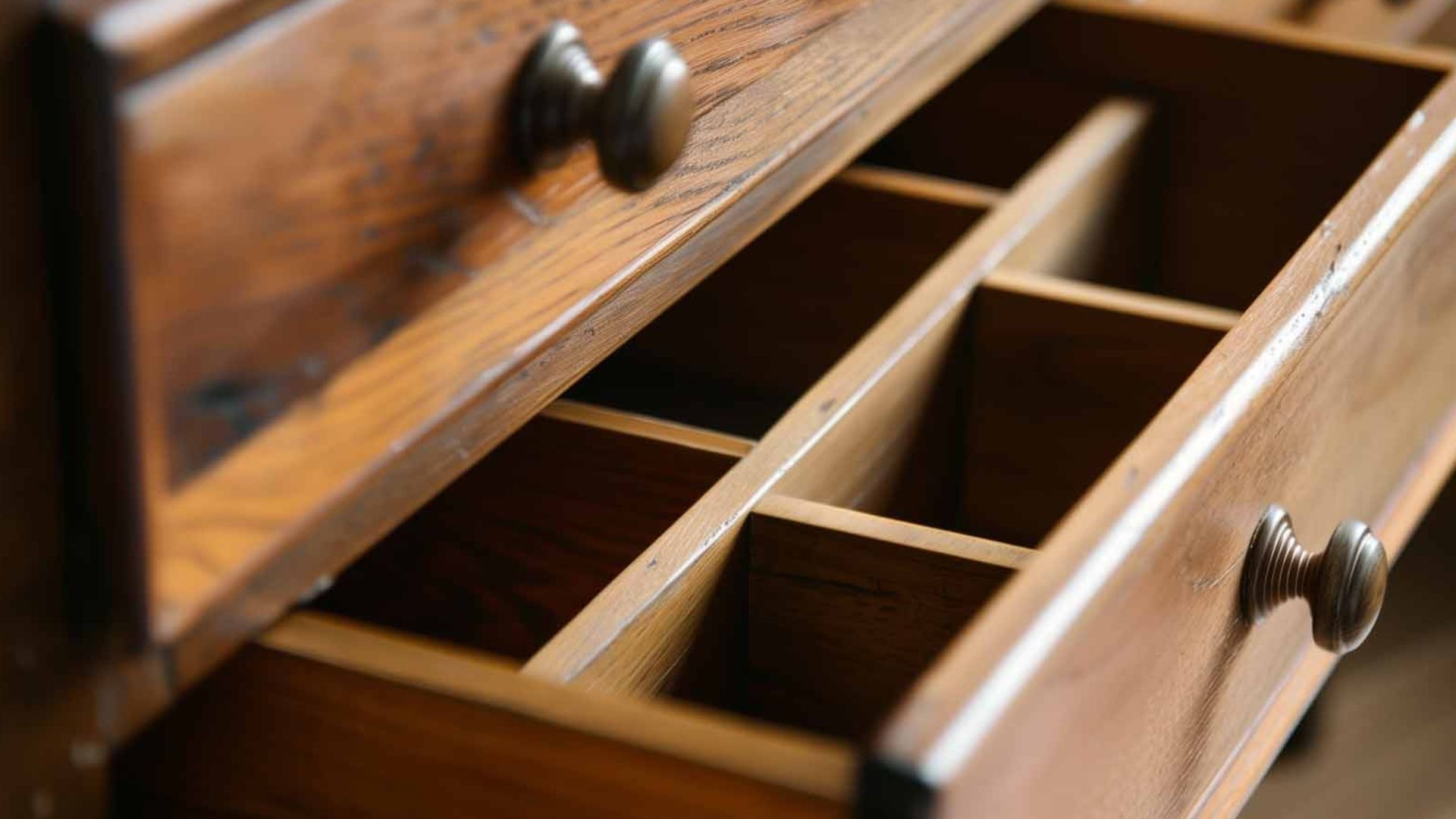How to Repair Holes in Walls When Moving?
To repair holes in walls when moving, and it's often much cheaper than letting your landlord do it. Most small holes cost just $5-15 to fix yourself, while landlords typically charge $50-300 per hole. According to the U.S. Department of Housing and Urban Development, tenants are expected to "maintain the unit in good condition" and return it to its original state. This guide shows you exactly how to patch any size hole quickly and get your full security deposit back.
Moving out of your home can be stressful enough without worrying about wall damage. The good news is that most wall holes are easy to fix with the right tools and steps. Whether you're dealing with tiny nail holes or larger dents, this guide will help you restore your walls to perfect condition.
Why Fix Wall Holes Before Moving
When you move out, your landlord expects the walls to look the same as when you moved in. Wall holes are not considered normal wear and tear - they're damage that comes out of your security deposit.
The average wall repair cost is $878, with most projects falling between $377 and $1,387, but you can fix most holes yourself for under $20. Here's what you need to know:
- Small nail holes: Landlords charge $20-50 each, you can fix for $0.50
- Medium holes: Professional repair costs $100-300, DIY costs $5-15
- Large holes: Contractor charges $200-500, DIY costs $15-40
Fixing holes yourself saves hundreds of dollars and keeps you on good terms with your landlord. Plus, you'll get valuable skills for your next home.
What Causes Wall Holes When Moving
Understanding why holes happen helps you prevent them in the future:
Common Causes During Moving
- Picture hanging: Nails, screws, and wall anchors leave holes
- Furniture damage: Moving heavy items can bump or scratch walls
- Doorknob hits: Doors swinging open and hitting walls
- Accidental damage: Dropping items or bumping into walls
- Wall anchor removal: Pulling out anchors tears the drywall
Types of Wall Damage
Tiny holes: Pin-sized holes from pushpins or small nails Small holes: Nail holes up to 1/2 inch from picture hanging Medium holes: 1/2 inch to 3 inches from screws or small anchors Large holes: Over 3 inches from doorknobs or accidents
Safety Considerations
Before starting any wall repair work, it's important to understand potential safety hazards. If you're working on a home built before 1978, you may encounter lead-based paint. The Environmental Protection Agency requires that renovation, repair, and painting projects that disturb lead-based paint must follow specific safety practices. For small repairs like filling nail holes, the risk is minimal, but larger repairs that involve sanding or cutting should be done with proper precautions.
Safety tips for wall repairs:
- Wear safety glasses when sanding or cutting
- Use dust masks during sanding
- Ensure good ventilation
- Keep repair areas clean of debris
- Follow manufacturer instructions for all products
According to the U.S. Bureau of Labor Statistics, construction work has significant injury risks, with falls, slips, and trips being major concerns. Even simple home repairs require attention to safety.
Tools and Materials You Need
Before you start, gather these basic supplies. Most items cost under $20 total:
For Small Holes (Under 1/2 Inch)
- Lightweight spackle paste
- Putty knife (2-3 inches wide)
- Fine sandpaper (120-grit)
- Paint brush or foam brush
- Touch-up paint
For Medium Holes (1/2 to 3 Inches)
- Self-adhesive mesh patch
- Joint compound or spackle
- Putty knife (4-6 inches wide)
- Sandpaper
- Primer
- Paint
For Large Holes (Over 3 Inches)
- Drywall patch kit or new drywall piece
- Joint compound
- Drywall tape
- Putty knife set
- Utility knife
- Sandpaper
- Primer and paint
Pro tip: Lightweight spackle, which has a fluffy consistency, sort of like thick whipped cream, dries quickly and doesn't shrink, so you can fill most small holes with just one application
How to Fix Small Holes (Under 1/2 Inch)
Small holes are the easiest to repair. Most people can fix them in under 30 minutes.
Step 1: Clean the Hole
- Remove any loose drywall or paint chips
- Wipe the area with a damp cloth
- Let it dry completely
Step 2: Apply Spackle
- For pinholes and nail holes, a gloved finger might work better than a putty knife as an application tool
- Press spackle into the hole
- Smooth it level with the wall surface
- Remove excess spackle
Step 3: Let It Dry
- Wait 30 minutes to 2 hours (check product instructions)
- Lightweight spackle often dries enough for water-based paint in 30 minutes, but only if patches are no more than ⅛-inch deep
Step 4: Sand Smooth
- Lightly sand with fine sandpaper
- Wipe away dust with a damp cloth
- The area should feel smooth to touch
Step 5: Paint
- Apply primer if needed
- Paint with a small brush
- Blend the edges into the surrounding wall
Emergency tip: Yes, toothpaste plugs holes in walls, as long as the holes are tiny and you use white toothpaste, not a clear gel. This works for pushpin holes when you're in a hurry, but use proper spackle for best results.
How to Fix Medium Holes (1/2 to 3 Inches)
Medium holes need more support to prevent cracking. The mesh patch method works great for these.
Step 1: Prepare the Hole
- Clean around the hole
- Remove any loose material
- If plastic wall anchors are left, slice the plastic off flush with the wall, using a sharp utility knife
Step 2: Apply the Mesh Patch
- Cut a piece of fiberglass mesh patch to overlap the hole by at least 1 inch on all sides
- Peel off the backing
- Press firmly over the hole
- Make sure it's flat and secure
Step 3: Add Joint Compound
- Use a 6-inch drywall knife to smear spackling compound through the mesh and over each hole
- Apply in thin, even coats
- Feather the edges outward
Step 4: Apply Second Coat
- Let dry overnight, sand lightly, then apply a second thin layer
- Each coat should be wider than the last
- Sand smooth between coats
Step 5: Finish
- Prime the area
- Paint to match the wall
- Check for any visible patches and touch up as needed
How to Fix Large Holes (Over 3 Inches)
Large holes require a more involved repair, but you can still do it yourself.
Step 1: Square the Hole
- Cut the ragged edge of the hole into a neat square or rectangle—using a drywall saw is ideal
- This makes the patch fit better
- Save the cut-out piece if possible
Step 2: Create Support
- Slip one of the 1 x 3 boards into the wall cavity and screw it to one edge of the cutout, being sure it overlaps into the hole by 1 1/4 inches
- Add a second board on the opposite side
- This gives your patch something to attach to
Step 3: Cut the Patch
- Measure the hole carefully
- Cut a piece of drywall slightly smaller than the hole
- Test fit before proceeding
Step 4: Install the Patch
- Screw the patch to the support boards
- Sink screws slightly below the surface
- The patch should be flush with the wall
Step 5: Apply Joint Compound
- Cover all seams with joint compound
- Apply in thin coats
- The final coat should be at least 12 inches square so that the compound at the edges of the patch feathers out to the surrounding wall
Step 6: Sand and Paint
- Sand smooth when dry
- Apply primer
- Paint to match the wall
Quick Emergency Fixes
Sometimes you need a fast solution. Here are some temporary fixes:
For Tiny Holes
- White toothpaste (temporary only)
- Crayon that matches the wall color
- Touch-up paint pen
For Small Holes
- Self-adhesive patches (peel and stick)
- Instant spackle that dries in 30 minutes
For Medium Holes
- DAP Eclipse Rapid Wall Repair Patches because they are quick and mess-free
- These patches work without sanding or waiting
Important: These are temporary fixes. For moving out, use proper repair methods to avoid deposit deductions.
Common Mistakes to Avoid
Learning from others' mistakes saves time and money:
Don't Rush the Drying Time
- Spackle needs time to dry completely
- Painting too soon causes the patch to show through
- Follow product instructions exactly
Don't Skip the Primer
- Primer helps paint stick better
- It prevents the patch from showing through
- Priming seals the filler and helps prevent it from absorbing the new paint
Don't Use Too Much Material
- Thick spackle applications crack when they dry
- Apply thin coats and build up gradually
- Less is more with wall repairs
Don't Forget to Sand
- Rough patches show through paint
- Light sanding creates a smooth finish
- Always wipe away dust before painting
When to Call a Professional
Some situations require professional help:
Complex Repairs
- Multiple large holes in one room
- Holes in textured walls or ceilings
- Water damage or mold around holes
- Electrical wires visible in holes
Time Constraints
- Moving out in 24-48 hours
- Dozens of holes to repair
- Landlord inspection scheduled soon
Skill Level
- You're not comfortable with DIY projects
- Previous attempts didn't work well
- The repair affects your security deposit
Cost consideration: The average cost to repair drywall is $609, and it can range between $150 and $2,000. Weigh this against your time and skill level.
Getting Your Security Deposit Back
Your goal is to return the property in the same condition you found it. Here's how to protect your deposit:
Document Everything
- Take photos before starting repairs
- Keep receipts for materials
- Photo the finished repairs
- Tenants should take pictures of the wall "prior to making holes, prior to repairing holes, and after making repairs"
Legal Requirements
- The U.S. Department of Housing and Urban Development states that tenants must "maintain the unit in good condition"
- Small nail holes may be considered normal wear and tear in some states
- Check your lease agreement for specific rules
Quality Standards
- Repairs should be invisible when done
- Paint should match exactly
- Surface should be smooth to touch
- No cracks or bulges allowed
Tips for Your Next Move
Prevention is better than repair. Here's how to avoid holes in your new place:
Hanging Pictures
- Use picture ledges instead of nails
- Try removable adhesive hooks
- Ask your landlord about approved hanging methods
- Consider professional moving services to prevent damage
Furniture Placement
- Use furniture pads to prevent scratches
- Keep heavy items away from walls
- Plan your layout before moving in
- Check out our moving checklist for more tips
Wall Protection
- Install door stops to prevent doorknob damage
- Use corner guards in high-traffic areas
- Consider temporary wall protection during moves
Cost Breakdown: DIY vs Professional
Here's what you can expect to spend:
DIY Costs
- Small holes: $0.50-2 per hole
- Medium holes: $5-15 per hole
- Large holes: $15-40 per hole
- Time investment: 1-4 hours depending on size
Professional Costs
- Small holes: $20-120 per hole
- Large holes: $50-200 per hole
- Average project: $377-1,387
- Time saved: Immediate professional results
Bottom line: DIY repairs can save you 80-90% on repair costs. For a typical apartment with 10-15 small holes, you could save $200-500 by doing it yourself.
Professional wall repair standards are established by industry organizations like the Painting Contractors Association, which provides guidelines for quality workmanship. Following these standards helps ensure your repairs will pass landlord inspections and protect your security deposit.
Specific Repair Scenarios
Moving Out of an Apartment
- Focus on small holes from picture hanging
- Use lightweight spackle for speed
- Match paint exactly (bring a sample to the paint store)
- Consider hiring professional apartment movers to prevent damage
House Sale Preparation
- Repair all holes, no matter how small
- Use primer on all patches
- Consider repainting entire rooms for best results
- Professional repairs may be worth the cost for major damage
Rental Property Turnover
- Budget for professional repairs if you're the landlord
- Document all damage with photos
- Provide repair receipts to tenants if deducting from deposits
- Emergency moving services can help minimize damage
Final Thoughts
Repairing holes in walls when moving doesn't have to be stressful or expensive. With the right tools, materials, and techniques, you can fix most holes yourself and save hundreds of dollars on your security deposit.
Remember these key points:
- Small holes are easy and cheap to fix
- Take your time and don't rush the process
- Document your work with photos
- Match paint colors exactly for invisible repairs
- Consider professional help for complex or time-sensitive situations
The investment in basic tools and materials pays for itself with just a few repairs. Plus, you'll have these skills for your next home. Whether you're dealing with tiny nail holes or larger damage, following these steps will help you restore your walls to perfect condition.
Need help with your upcoming move? Consider working with professional movers who can help prevent wall damage in the first place. Good luck with your repairs and your move!



